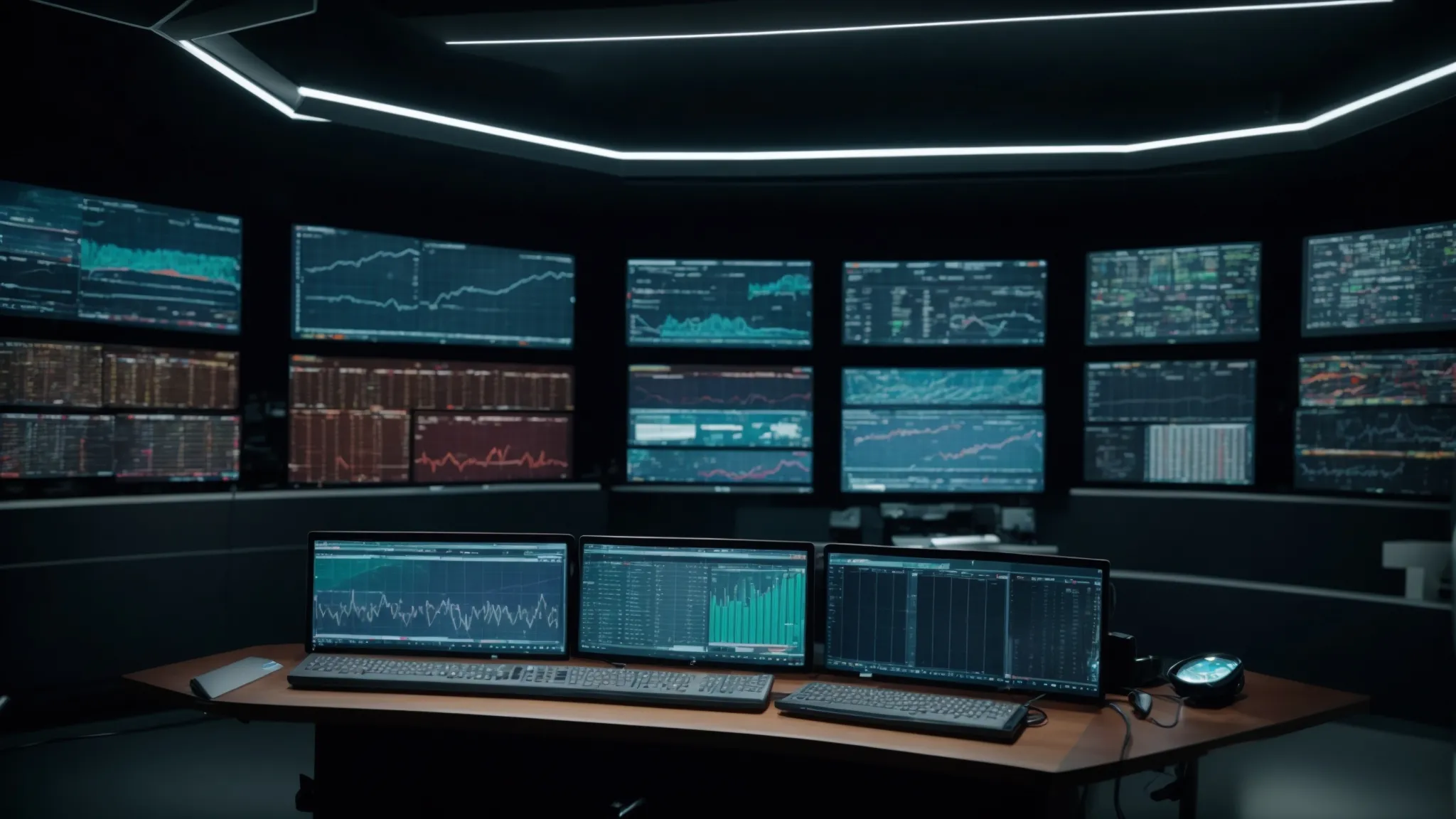
Implementing a Reputational Risk Assessment Framework Successfully
In the labyrinth of the modern business landscape, a company’s reputation gleams like a beacon, guiding prospects to its doors.
Yet, this prized asset is vulnerable, susceptible to the tempests of public opinion and the shadowy specters of misinformation.
Implementing a Reputational Risk Assessment Framework is akin to charting a map through tumultuous seas, a blueprint for navigating the murky waters of reputational harm, and safeguarding the luminescence of an organization’s standing in the market.
By mastering the elements of reputational risk, businesses erect fortresses around their most valuable asset — their public esteem.
Keep reading to unveil how to weave this critical framework into the very fabric of your organizational culture, turning potential risks into bastions of strength.
Key Takeaways
- Reputational Risk Is a Multifaceted Threat That Can Unravel an Organization’s Identity
- Identifying the Sources of Reputational Harm Is Crucial for Crafting a Robust Defense
- A Diverse Reputational Risk Assessment Team Is Vital for Comprehensive Risk Management
- Proactive and Reactive Strategies Enhance an Organization’s Ability to Navigate Reputational Challenges
- Embedding a Reputational Risk Framework Into an Organization’s Culture Is Key to Enduring Success
Understanding the Basics of Reputational Risk

In the labyrinth of modern business, reputational risk emerges as the Minotaur, lurking in the shadows, ready to strike at the heart of an organization’s esteem.
To navigate this maze and safeguard one’s standing in the digital Colosseum, understanding the fundamentals of reputational risk is akin to holding Ariadne’s thread.
It begins with an intricate dance of defining what reputational risk truly signifies for an entity, recognizing it as not merely the potential for loss but as a multifaceted threat capable of unraveling the tightly knit fabric of an organization’s identity.
Alongside this, identifying the myriad sources of reputational harm—from social media missteps to ethical breaches—is crucial.
This process acts as the first defensive spell, warding off the specters of reputation loss by illuminating the dark corners where perils may lurk.
Thus, equipping oneself with the knowledge of reputational risk’s essence and its origins is akin to arming oneself with a shield and sword, preparing to defend the citadel of reputation against all adversities.
Define What Reputational Risk Means for Your Organization
For any establishment, grappling with the definition of reputational risk is akin to a tailor measuring fabric accurately before cutting; it demands a precision that takes into account the unique contours and dimensions of the entity itself. It encompasses the peril of damaging public perception in a way that could unfavorably affect a corporation’s fortunes, thought of as the shadow that looms over every decision, darkening the water of potential prosperity with the ink of public disapproval.
Understanding what reputational risk entails for an organization involves peeling back layers to reveal the heartbeat of the enterprise. It’s recognizing that this form of risk doesn’t just signify possible financial hemorrhaging, but includes the intangible, yet equally critical, fraying of the bonds of trust and reliability it has with its customers, stakeholders, and the wider community, potentially shifting the ground beneath an organization’s feet to sand.
Identify Potential Sources of Reputational Risk
Unveiling the shadowy realms from which reputational risk might spring forth requires a keen eye: it’s an exercise in vigilance. These sources range from internal missteps, such as lapses in ethics or failures in compliance, to external threats, including social media controversies or negative press, painting a complex tableau of potential pitfalls.
Embarking on the journey to identify these sources is pivotal, marking the initial step in crafting a fortress to protect the organization’s reputation. Among these threats, digital platforms often emerge as a double-edged sword: a space for growth and engagement, yet fraught with the danger of rapid reputational harm:
- Social media missteps: A single misguided tweet can ignite a firestorm.
- Unethical behavior: Internal scandals can erode trust overnight.
- Failure to comply with regulations: Non-compliance can lead to legal repercussions and public backlash.
- Negative press: Unfavorable media coverage can tarnish years of good reputation.
Now that we’ve unraveled the intricate tapestry of reputational risk, let’s embark on a thrilling journey. Next up, assembling your vigilante squad for reputational risk assessment – an adventure where strategy meets action.
Establishing Your Reputational Risk Assessment Team

In the intricate ballet of reputational risk management, establishing a robust Reputational Risk Assessment Team stands as a pivotal move toward guarding the fortress of an organization’s reputation.
This ensemble, much like the crew of a ship navigating through stormy seas, should be composed of members plucked from the diverse flora of organizational functions.
Each individual, with their unique vantage point and expertise, contributes to a panoramic view of the organization’s landscape, enabling early detection of reputational threats.
Assigning clear roles and responsibilities within this team is not just about delineating tasks; it’s about orchestrating a symphony where each player knows their cues, ensuring a harmonious defense against the specters of reputational damage.
This foundational step sets the stage for a comprehensive approach to identifying, assessing, and mitigating risks, encapsulating the essence of proactive reputational risk management.
Select Team Members From Diverse Organizational Functions
In the tapestry of reputational risk management, selecting team members from a broad spectrum of organizational functions acts as the warp and weft, strengthening the overall fabric. This diversification is not just strength in numbers but in perspectives, embodying a holistic approach to identifying nuances in reputational risk that might elude a more homogenous group.
The assembly of this team, drawn from distinct corners of the organization, ensures that every possible source of reputational risk is scrutinized under the microscope of multidisciplinary expertise. From the keen eyes of the legal team to the intuitive grasp of market trends by the marketing department, each member brings a slice of the organizational pie to the table, making the risk assessment both comprehensive and insightful:
| Team Member | Department | Role in Risk Assessment |
|---|---|---|
| John Doe | Legal | Identify compliance risks and legal ramifications |
| Jane Smith | Marketing | Evaluate market trends and customer feedback |
| Alex Johnson | HR | Assess internal culture and employee-related risks |
| Chris Lee | IT | Analyze cybersecurity threats and data breaches |
Assign Clear Roles and Responsibilities Within the Team
In the creation of a Reputational Risk Assessment Team, assigning clear roles and responsibilities is not just a bureaucratic necessity; it’s akin to a maestro conducting an orchestra. Each individual’s tasks must align harmoniously, ensuring that the melodies of risk management are played without a discordant note, seamlessly fusing expertise to create a symphony of strategic foresight and proactive response.
Within this team, the clarity of each member’s duties serves as the beacon, guiding the group through the tempestuous seas of reputational threats. It’s a testament to the belief that when everyone knows exactly what part they play, the chances of mitigating reputational damage increase exponentially, transforming potential chaos into a choreographed dance of diligence and vigilance.
The stage is set, the players are in place. Let’s unravel the next mystery: pinpointing the pivotal criteria for our reputational risk odyssey.
Mapping Out Key Assessment Criteria

Like cartographers charting territories anew, architects of a Reputational Risk Assessment Framework must meticulously delineate the criteria that will guide their explorations into the fertile but perilous lands of organizational reputation.
This task, critical as the keystone in an arch, requires a sharp discernment of what variables and indicators hold the most sway over the public’s perception and, by extension, the organization’s standing.
With an astute prioritization of these criteria, based on their potential to either uplift or undermine the reputation, the framework promises not just to be a shield against the storms of criticism but a compass pointing towards the haven of sustained public trust and confidence.
Determine What Criteria Will Be Used to Assess Risks
In the mosaic of crafting a Reputational Risk Assessment Framework, determining the criteria to assess risks implicates dissecting the multitude of factors that can sway an organization’s standing. The lenses through which these risks are viewed must be finely calibrated, focusing on variables that hold the potential to dent the armor of the company’s reputation.
This stage demands the alignment of perceptual acumen with strategic insight, to sieve through the myriad of possible risk sources and pinpoint those with the gravitas to shift public perception significantly. Such criteria could encompass a range from customer satisfaction metrics, through to compliance adherence levels and beyond, each carefully chosen for its direct impact on reputational stability.
Prioritize Criteria Based on Their Impact on Reputation
In the tapestry of reputational risk management, the act of prioritizing criteria based on their impact on reputation transforms into an exercise of discernment akin to a jeweler examining gems under a loupe: each factor must be scrutinized for its potential to either embellish or tarnish the reputational crown. This process ensures that resources are allocated efficiently, focusing on areas where the threat to reputation is most acute and the potential for damage greatest.
The architects of a Reputational Risk Assessment Framework embark on a meticulous journey to classify these criteria, culminating in the creation of a prioritized list that mirrors the organization’s hierarchy of values:
- Customer satisfaction and feedback mechanisms
- Legal compliance and adherence to ethical standards
- Employee morale and internal culture
- Data security and privacy practices
- Market positioning and competitive dynamics
This ranked ordering not only illumines the pathways through which reputational harm might travel but also serves as a beacon, guiding the strategic deployment of defensive measures and the allocation of monitoring efforts. It’s a pivotal step toward not just neutralizing threats but fostering an environment where reputation can flourish, shielded from the storms of public scrutiny and skepticism.
With key assessment criteria laid out like a treasure map, the adventure escalates. Next comes crafting a risk monitoring plan that’s as meticulous as a master watchmaker’s design.
Developing a Comprehensive Risk Monitoring Plan

In the intricate dance of safeguarding an organization’s reputation, cultivating a nurtured environment for success mandates the installment of a comprehensive risk monitoring plan.
This strategic blueprint, acting as the organization’s lighthouse, shines a beacon on the nefarious shadows of reputational risks, allowing for timely adjustments and interventions.
Setting up procedures for ongoing reputation monitoring melds with leveraging the precision of technology tools for real-time risk detection, creating a robust defense mechanism.
This duality of approach ensures a seamless surveillance over the organization’s reputation, transforming the reactive nature of risk management into a proactive and dynamic symphony of vigilance and responsiveness.
Set Up Procedures for Ongoing Reputation Monitoring
Initiating a vigilant watch over an organization’s reputation requires the establishment of ongoing reputation monitoring procedures, a beacon in the tumultuous ocean of digital discourse. This vigilance is the compass by which potential reputational pitfalls are navigated, enabling the organization to act swiftly should the specter of reputational harm arise.
Incorporating advanced analytic tools and social listening platforms into the fabric of the organization’s operational routine forms the backbone of a robust reputation monitoring strategy. This approach ensures a continuous pulse on public sentiment and stakeholder perceptions, acting as an early warning system to detect ripples of reputational risk before they become waves.
Utilize Technology Tools for Real-Time Risk Detection
In the realm of managing reputational risk, the deployment of technology tools emerges as a linchpin for the real-time detection of potential dangers: a veritable lantern in the dark, unveiling threats invisible to the naked eye. These digital instruments, sophisticated in their workings, sift through the vast expanse of online chatter and data, flagging anomalies and patterns indicative of reputational risks.
- Cloud-based analytics platforms process large datasets, rendering complex information into decipherable insights.
- Social listening tools scrutinize public sentiment across social networks, blogs, and forums, capturing shifts in perception.
- AI-driven algorithms predict trends and potential crises by evaluating past incidents and current online behaviors.
Together, these tools constitute a formidable arsenal, transforming the passive posture of risk detection into an active stance of anticipation and preparedness. This vigilant watch over the digital horizon not only capacitates organizations to identify threats with precision but also empowers them to act swiftly, mitigating reputational harm before it can escalate.
Having mapped out a robust risk monitoring blueprint, we pivot to the art of preparation. Crafting effective response strategies becomes our next thrilling chapter.
Crafting Effective Response Strategies Ahead of Time

In the tumultuous seas of the digital age, where the winds of public opinion shift swiftly and without warning, the construction of robust response strategies stands as the bulwark against potential reputational tempests.
This strategic foresight, encompassing both proactive measures to thwart impending storms and reactive strategies to navigate through them, ensures an organization is not left adrift in the wake of reputational harm.
By planning proactive measures, a firm can fortify its defenses, minimizing the impact of potential threats before they make landfall.
Concurrently, designing reactive strategies for immediate execution equips an entity with the agility to respond with precision and grace, turning potential crises into opportunities for reaffirming trust and integrity in the public eye.
Plan Proactive Measures to Mitigate Potential Risks
In the chess game of digital reputation, preemptive moves are essential: crafting a series of strategic actions designed to shield an organization from the gusts of reputational harm. This involves not only rigorous training within teams on compliance and ethical codes but also developing a robust internal communication system to detect early signs of potential risks.
- Set up frequent training sessions to ensure all employees are aware of compliance requirements and ethical standards.
- Implement a comprehensive internal reporting system for potential threats to reputation, encouraging a culture of transparency and vigilance.
- Regularly review and update crisis communication plans to ensure readiness in responding to reputational threats swiftly.
These proactive measures form the cornerstone of a resilience strategy, empowering an organization to navigate the tumultuous waters of public opinion with agility and foresight. By establishing a solid proactive playbook, the organization not only defends its reputation but also fortifies its position in the marketplace against the inevitable storms of change and challenge.
Design Reactive Strategies for Immediate Implementation
In the crucible of crisis, the agility to enact reactive strategies for immediate implementation stands as a bulwark against the tidal waves of reputational damage. These strategies act as a swift, decisive countermeasure, enabling an organization to stem the outflow of trust and rebuild public confidence with actions that speak louder than words.
Central to this rapid response is a clear, well-orchestrated communication plan targeting all key stakeholders: employees, customers, investors, and the public at large. Succinct messaging, aligned with the truth and transparent intentions, can turn the tide, transforming potential discord into renewed harmony:
- Immediate acknowledgment of the issue, coupled with an expression of commitment to resolve it.
- Deployment of a dedicated response team to engage with stakeholders across varied platforms.
- Regular updates on corrective actions and progress, ensuring consistent, open lines of communication.
Crafting effective response strategies lays the groundwork for a deeper transformation. Next, we’re integrating this blueprint into the very fabric of organizational culture, steering the ship toward a future-proof horizon.
Integrating the Framework Into Organizational Culture

The seamless melding of a Reputational Risk Assessment Framework with an organization’s cultural fabric marks the zenith of strategic foresight and operational excellence. The task demands more than just the introduction of protocols; it requires a cultural metamorphosis, where the values of vigilance, transparency, and integrity become the guiding stars of every organizational endeavor.
This cultural shift hinges upon the leadership’s endorsement and active promotion of the framework’s principles: a clarion call that resonates throughout the corridors of the organization. Leaders must embody the proactive and preventive ethos of reputational risk management, setting a precedent for behavior and engagement at all tiers of the organization.
Training and education programs act as the crucible for this transformation, ensuring that every member of the organization understands their role within the framework and the importance of their contributions to safeguarding the organization’s reputation:
| Program | Objective | Target Audience |
|---|---|---|
| Compliance Overview | To instill a deep understanding of legal and ethical standards. | All employees |
| Risk Reporting Mechanisms | Equip employees with the knowledge to identify and report potential risks. | All employees |
| Crisis Response Training | Prepare designated teams for swift, effective action in the face of reputational threats. | Response teams |
Lastly, embedding the framework into daily operations crystallizes its role as a cornerstone of the organizational culture. By weaving the assessment and management of reputational risk into the fabric of routine decision-making, the organization fortifies its defenses against the unpredictable waves of public scrutiny, ensuring that its legacy and reputation endure through the challenges of an ever-changing business landscape.
Conclusion
Successfully implementing a Reputational Risk Assessment Framework is crucial for organizations aiming to navigate the turbulent waters of modern business landscapes.
It serves as a vital shield, protecting against the myriad sources of reputational harm, from social media blunders to compliance failures.
By establishing a dedicated team with members from diverse organizational functions, organizations can create a comprehensive strategy that allows for the early detection of potential risks and the development of both proactive and reactive measures to address them.
Utilizing technology tools for real-time monitoring, alongside crafting effective response strategies, ensures that organizations can respond swiftly and effectively to any threats to their reputation.
Moreover, embedding the framework into the organizational culture, through leadership endorsement and thorough training, ensures a robust defense mechanism against reputational threats.
Ultimately, a well-integrated Reputational Risk Assessment Framework not only safeguards an organization’s reputation but also enhances its resilience and positions it for sustained success in the face of challenges.





